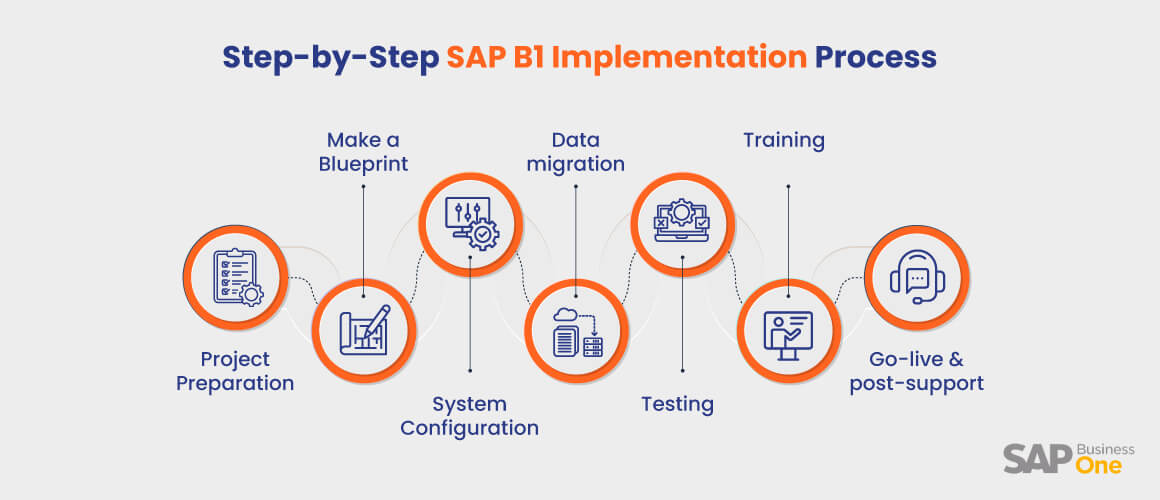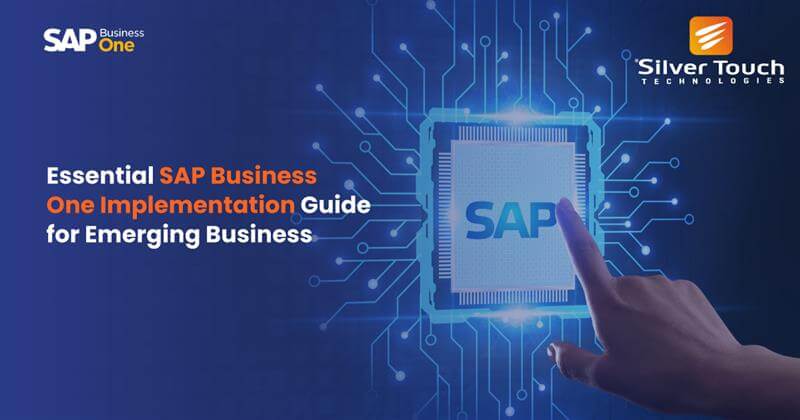SAP Business One has set milestones in popularity among small and mid-sized enterprises worldwide. SAP Business One implementation can bring transformative changes to growing businesses. As a comprehensive suite of business intelligence tools, SAP B1 can manage every process from financials to sales. However, a clear roadmap is essential for its effective implementation.
This blog talks about the key SAP B1 implementation steps and assists you in ensuring a smooth transition to drive more profitability. But before digging deep into these steps, let’s understand the importance of proper planning in SAP Business One implementation.
Importance of SAP Business One Implementation Planning
Effective or successful implementation of SAP Business One is a complicated process and requires meticulous planning and seamless implementation. A lack of proper planning can lead to significant problems and delays with cost overruns.
Let’s understand the importance of planning for implementing the SAP Business One ERP solution.
As an advanced system, SAP B1 can change the way a business operates. Effective planning is useful for identifying inefficiencies and areas of improvement for current business processes. It enables modern enterprises to map their workflows to SAP Business One’s capabilities. Moreover, it is useful for better resource allocation and budgeting.
Finally, an accurate implementation roadmap involves a data migration strategy, risk mitigation, and change management. It can increase user adoption of SAP Business One, and companies can leverage the benefits of this feature-rich solution.
Let’s dig deep into the SAP Business One implementation steps.
Step-by-Step SAP B1 Implementation Process

Implementing SAP Business One is a structured process that has several distinct phases. Here are the key steps involved in this process-
Step-1 Project Preparation
It includes the identification of project scope and objectives. You can identify key stakeholders from various departments who can actively participate. The next stage is making a project plan or blueprint.
Step-2 Make a Blueprint
It is essential to understand current business processes and how to implement SAP Business One to optimize them. Requirement gathering, gap analysis, and process mapping are its necessary steps.
Step-3 System Configuration
This is one of the most crucial stages of SAP B1 implementation. It enables companies to get a tangible system based on the blueprint. Whether it is on-premise or cloud, companies can get the SAP B1.
Step-4 Data migration
It is another crucial stage that involves the transfer of existing business data from the legacy system into the newly implemented SAP B1 system effectively. Data identification, cleansing, and mapping are essential.
Step-5 Testing
This stage involves unit testing, integration testing, and user acceptance testing (UAT) to ensure that the SAP Business One solution works properly. The testing ensures the stability and reliability of the system.
Step-6 Training
An SAP Business One partner gives training to end users so they can use it easily for their daily tasks. Hands-on training sessions and making a core group of super users are a part of this stage.
Step-7 Go-live & post-support
This is the final stage of replacing old or legacy systems with SAP B1 completely. The SAP B1 implementation partner ensures a smooth transition and optimal performance with ongoing support.
Implementing SAP Business One is a complex process, and companies must avoid some common mistakes. Here we give a list of such mistakes.
Common Implementation Mistakes to Avoid
SAP Business One implementation brings some challenges for organizations that lead to cost overruns, user dissatisfaction, and a failure to get the expected ROI. It is, therefore, necessary to understand and avoid some common mistakes for successful implementation.
The first mistake is inadequate project planning and issues in scope definition. Negligence of change management and user adoption is another common mistake. Moreover, many companies fail in addressing data migration challenges and opt for over customization of the SAP B1 system.
Finally, choosing the wrong SAP B1 implementation partner and erroneous testing are mistakes that can bring issues in the future.
Estimated Timelines & Resource Requirements
Estimation of timelines and resource requirements can help companies plan and budget effectively. However, both these factors can vary significantly based on the complexity and requirements of the business, the number of users, etc.
Talking about the timeline estimation, standard or simple implementation takes around 12 to 16 weeks or 3 to 4 months. This type of implementation is ideal for small businesses with few users and minimal customization. It includes standard functionality for sales, purchasing, and finance.
Implementation with moderate complexity takes around 4 to 6 months. It is ideal for moderately complex processes in basic manufacturing companies. It involves some customization and integration with a few external systems.
Larger SMEs with many users and highly complex manufacturing processes require a high complexity rollout. It takes around 20 to 40 weeks or 5 to 10 months. It involves significant customization requirements and extensive integrations with third-party systems. Mostly, such implementation is carried out in different phases.
The project’s scope, complexity, data volume, number of users, and business requirements are crucial factors that influence the implementation timeline. A reputed SAP Business One implementation partner can assist companies to ensure a successful process by following the best practices.
Best Practices for a Successful Rollout
A successful SAP B1 implementation can transform business processes and empower your team. One of the best practices for effective implementation is meticulous planning based on clear identification of objectives. Companies should invest in the project preparation and blueprint phases to understand the process and identify specific goals. Rigorous gap analysis is essential for customization.
Apart from these practices, it is essential to keep a strong focus on people and processes. A comprehensive change management strategy and extensive user training based on their roles are equally important. Finally, data quality and accuracy with proper testing can make the implementation successful.
Why Partner with Silver Touch for SAP B1
The choice of implementation partner can play a vital role in the successful implementation of SAP Business One. As a preferred SAP Partner, we assist you at every stage of implementation to ensure a successful transition from traditional to advanced SAP B1 system. Our in-house team of certified SAP B1 experts understands your business model and requirements thoroughly before making an implementation blueprint.
We build custom add-ons to meet unique and distinct requirements. Our ongoing support and guidance with a client-centric approach have facilitated many companies across different industry sectors in meeting growing needs. Contact us to learn the scope of the SAP B1 solution for your business and get assistance to stay ahead of the curve.
Concluding Remarks
Implementing SAP B1 is a complex process and requires significant efforts. We have covered all the SAP B1 implementation steps and best practices in this comprehensive guide. Hope this guide will help you leverage the benefits of the SAP Business One ERP solution to drive the growth of your business.



